Over the past number of years, bale unrollers have become increasingly popular on Irish farms that feed round-bale silage. The concept was designed to be a fast and effective solution for feeding out round bales to reduce the need for manual forking. Co Antrim-based Blaney Agri Solutions designed and manufactured the bale unroller over a decade ago.
We recently tried out the X10W bale unroller. This simple piece of kit is attached to the tractor using a three-point linkage and two double-acting spool valves.
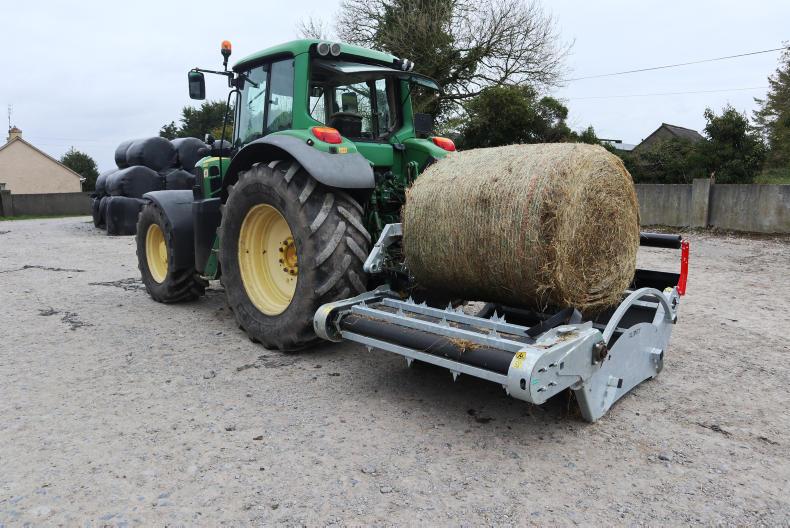
How does it work?
Once the machine is attached to the tractor, the first thing you need to do is pull a rope in order to release the auto-locking mechanism. This will decouple the three-point linkage frame from the unit.
Using the two 50mm sprung tines, the bale is then lifted on to the cradle, before removing the net. The tines should then be guided into the guide holes of the cradle and recoupled along with the auto-locking mechanism.
When the bale is resting on the cradle, you will have the option of feeding it out either to the left or right, adjusting the hydraulics to suit. The issue that you will come across here is that the bale will actually only roll out at its ease in one direction, the opposite direction in which it was baled. The hydraulics should be adjusted on the tractor in order to regulate the flow of the oil to keep the working speed of the chains slow for best performance.

Extension wing
The machine we tested was the Forager X10W. This model is based on the X10, with the addition of the extension wing.
Personally, if I was going to buy one of these machines, I would opt for the extension wing as it gives you some scope when feeding in tighter areas. In other words, it means you don’t have to drive the tractor tight to the barrier and can dispense the silage further over an obstacle or into a trough.
The company has two width options of the extension wing – a 600mm and 1,000mm offset wing. This extension wing can be adjusted hydraulically from the cab. The wing is adjustable by almost 90° to suit various feeding setups.
The machine seems to be very well designed. It is compact and strong. The bale unroller is equipped with two 50,000N chains. These two rotating chains are responsible for driving the heavy duty cross bars.
The cross bars are equipped with triple-peak spikes, to help deal with difficult bales. The auto-locking mechanism is a nice feature. It cuts out the need for the farmer to leave the cab and it is very simple to use. The design of the frame and the side roller option provide for a high bale enclosure.
The typical X10 will have a safety guard each side which protects livestock. However, as we tried the machine with the extension it meant it only had one safety guard. The machine is light and easy to drive. Blaney says the machine is suitable for use with tractors of 75hp+. If purchasing a new machine, you can choose between a painted or galvanised finish.
Easy to use and effective
I liked the machine – it was simple, easy to use and effective. There’s no doubt but the machine will save your back from forking silage. However, it does take a little time to feed each bale.
By the time you cut the plastic off the bale, pick it with the spikes and load it on to the cradle, removing the net off the bale and then feed it out, you’re talking somewhere in the region of five minutes per bale.
The only flaw that I would have noticed is that the bale will actually only roll out at its ease in one direction, the opposite direction in which it was baled. This can be addressed by turning the tractor and feeding the bale in the opposite direction. Other than that you will need a tractor with a decent lift height to be capable of lifting the bale clear of the cradle to allow you adequate space to remove the netting. If you are a farmer who likes to feed your cattle every day, keeping fresh silage in front of the cattle and removing the task of forking silage, then a bale un-roller could be the machine for your farm. The other advantage of this system is that it is a one man and one tractor operation.
Pricing starts at €4,300, while the same specification of the machine we tested would set you back around €7,000 plus VAT.




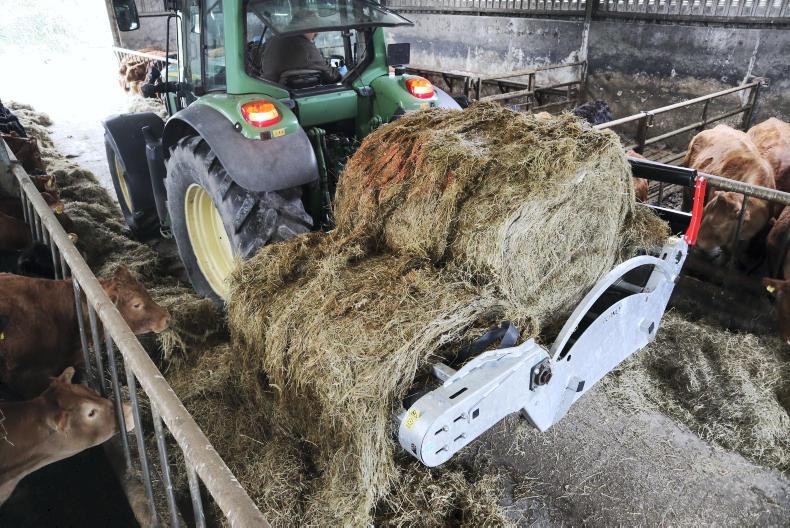


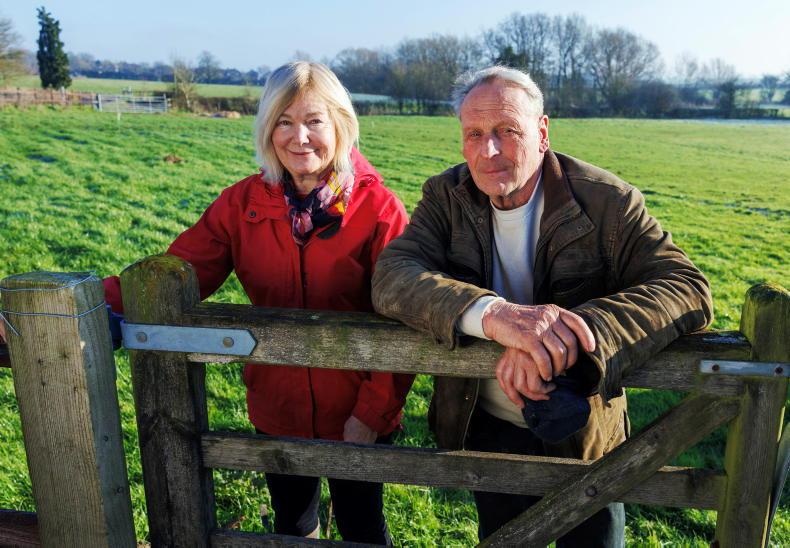
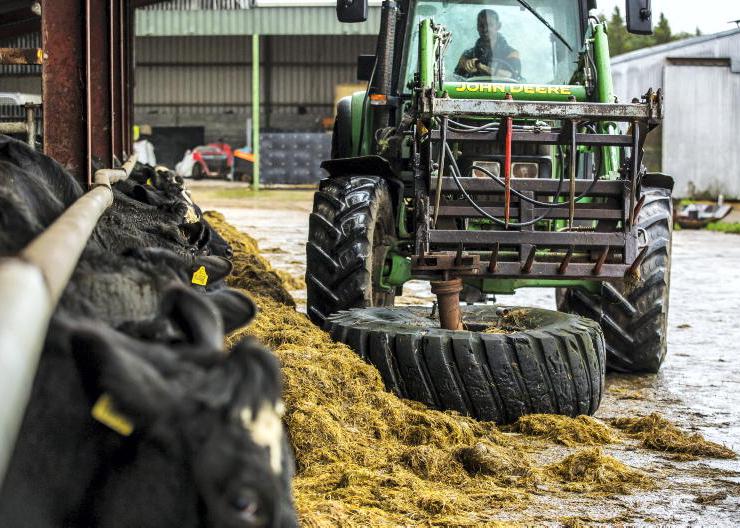
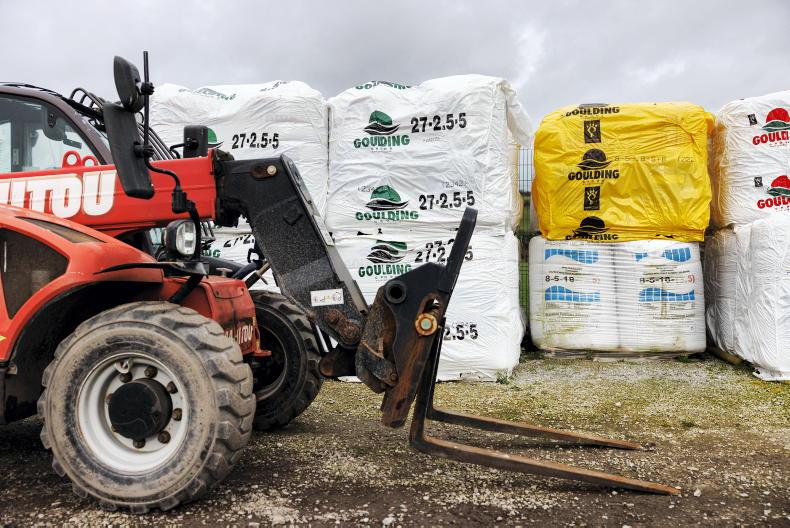
SHARING OPTIONS